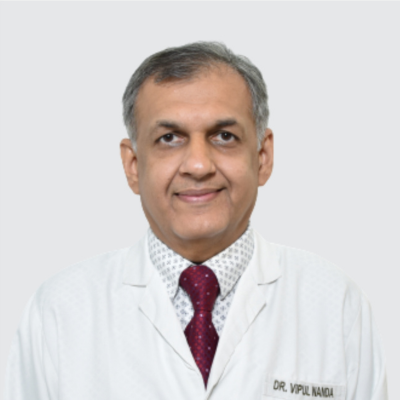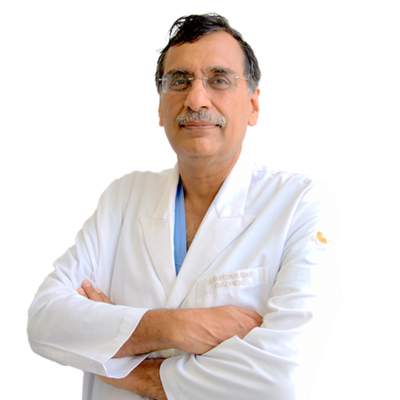Medical Visa Extension in India: How to Apply and What You Need to Know
 27 March,2025
Read More
27 March,2025
Read More
Enquire now in case of any assistance needed
Starting From: USD 500 - USD 1400
Hospitalization Days: 1 Days
Procedure Duration: 1 Hrs - 2 Hrs
Gynecomastia Surgery is affordable in India. The cost of Gynecomastia Surgery in India lies between USD 500 - USD 1400. The exact procedure price depends on multiple factors such as the surgeon's experience, type of hospital, severity of the condition, patient's general condition,�etc.
Gynecomastia surgery, also known as male breast reduction, is a surgical procedure aimed at reducing excess breast tissue in men. Commonly caused by hormonal imbalances, obesity, or certain medications, gynecomastia can lead to self-consciousness and discomfort. The surgery involves removing glandular tissue and excess skin, resulting in a flatter, more masculine chest contour. Candidates for the procedure undergo a thorough evaluation to determine the underlying cause of gynecomastia and ensure they are in good health for surgery. Gynecomastia surgery can significantly improve self-confidence and quality of life for men affected by this condition.
Gynecomastia surgery, or male breast reduction, is sought for various reasons related to the physical and psychological well-being of individuals affected by this condition. Gynecomastia refers to the enlargement of male breast tissue, often caused by hormonal imbalances, obesity, or genetic factors. Here are some reasons why individuals may consider gynecomastia surgery:
Ultimately, the decision to undergo gynecomastia surgery is personal and varies from individual to individual. Consulting with a qualified plastic surgeon helps individuals understand the procedure, manage expectations, and determine if surgery aligns with their goals for physical and emotional well-being.
Gynecomastia surgery encompasses various techniques tailored to address the specific needs and severity of male breast enlargement. The types of gynecomastia surgery include:
The choice of gynecomastia surgery depends on factors such as the type of tissue involved, the extent of enlargement, and the desired outcome. A qualified plastic surgeon will assess individual cases to determine the most appropriate surgical approach, ensuring optimal results and patient satisfaction.
Several factors contribute to the cost of gynecomastia surgery, reflecting the individualized nature of each case and the complexity of the procedure. Some key factors influencing the cost include
Individual considerations, such as the severity of gynecomastia and any additional procedures required, also influence costs. It's essential for individuals considering gynecomastia surgery to consult with a qualified plastic surgeon to receive a personalized assessment and a comprehensive understanding of the associated expenses.
Patient selection for gynecomastia surgery involves a thorough assessment by a qualified plastic surgeon to determine if surgery is the appropriate course of action. Several factors and signs are considered during this evaluation:
The selection process involves a collaborative effort between the patient and the surgeon to ensure that the procedure aligns with the patient's goals and expectations. A personalized approach is crucial to address each individual's unique circumstances and achieve optimal results.
Diagnostic tests and evaluations are essential to determine the need for gynecomastia surgery, ensuring a thorough understanding of the underlying factors and aiding in the development of an appropriate treatment plan. Some key assessments include:
The combination of these diagnostic tools allows the plastic surgeon to gather comprehensive information, tailor the treatment plan to the individual's specific needs, and determine if gynecomastia surgery is the most suitable intervention. Open communication between the patient and the medical team is essential for a successful diagnostic process and treatment outcome.
Gynecomastia surgery, like any surgical procedure, entails both risks and benefits. Understanding these factors is crucial for individuals considering this intervention.
Individual outcomes vary, and the decision to undergo gynecomastia surgery should involve a thorough discussion with a qualified plastic surgeon. The benefits of improved aesthetics and psychological well-being should be carefully weighed against potential risks, and realistic expectations should guide the decision-making process.
Recovery and rehabilitation after gynecomastia surgery are crucial phases in achieving optimal results and minimizing potential complications. The following generic overview outlines key aspects of the recovery process:
Adherence to postoperative instructions is paramount for a successful recovery. Individual experiences may vary, and patients should communicate openly with their surgeon, reporting any unexpected symptoms or concerns promptly. While the initial recovery period is crucial, patients may continue to see improvements in the appearance of the chest over several weeks and months.
After undergoing gynecomastia surgery, individuals can expect a series of postoperative experiences as part of the recovery process. While individual outcomes may vary, here is a generic overview of what to expect after gynecomastia surgery:
Individuals need to follow postoperative instructions provided by the surgeon diligently, including wound care, medication management, and activity restrictions. Open communication with the surgical team and adherence to the recommended guidelines contribute to smoother recovery and optimal outcomes.
Gynecomastia surgery, also known as male breast reduction surgery, is performed to address the enlargement of male breast tissue. The procedure involves several key steps, which may vary depending on the specific technique employed and the individual patient's needs. Here is a generic overview of how gynecomastia surgery is typically performed:
Gynecomastia surgery aims to create a more masculine chest contour and improve self-confidence. Individual experiences and outcomes may vary, and patients need to follow postoperative instructions provided by their surgeon diligently to achieve optimal results.
Vice Chairman
Cosmetic Surgeon
Medanta - The Medicity Hospital, Gurgaon
Book AppointmentDirector
Cosmetic Surgeon
Medanta - The Medicity Hospital, Gurgaon
Book AppointmentAssociate Director
Cosmetic Surgeon
Medanta - The Medicity Hospital, Gurgaon
Book AppointmentSenior Consultant
Cosmetic Surgeon
Medanta - The Medicity Hospital, Gurgaon
Book AppointmentChairman
Cosmetic Surgeon
Medanta - The Medicity Hospital, Gurgaon
Book AppointmentVice Chairman
Cosmetic Surgeon
Medanta - The Medicity Hospital, Gurgaon
Book AppointmentDirector
Cosmetic Surgeon
Medanta - The Medicity Hospital, Gurgaon
Book AppointmentAssociate Director
Cosmetic Surgeon
Medanta - The Medicity Hospital, Gurgaon
Book AppointmentSenior Consultant
Cosmetic Surgeon
Medanta - The Medicity Hospital, Gurgaon
Book AppointmentChairman
Cosmetic Surgeon
Medanta - The Medicity Hospital, Gurgaon
Book AppointmentVice Chairman
Cosmetic Surgeon
Medanta - The Medicity Hospital, Gurgaon
Book AppointmentDirector
Cosmetic Surgeon
Medanta - The Medicity Hospital, Gurgaon
Book AppointmentDoctor of Pharmacy
Dr. Deepanshu Siwach is a skilled clinical pharmacist with a Doctor of Pharmacy degree.?He has 4+?years of experience and has worked with thousands of patients. He has been associated with some of the top hospitals, such as Artemis Gurgaon.
Dr. Deepanshu Siwach is a skilled clinical pharmacist with a Doctor of Pharmacy degree.?He has 4+?years of experience and has worked with thousands of patients. He has been associated with some of the top hospitals, such as Artemis Gurgaon....
With over 23 years of experience, Dr. Vipul Nanda, an eminent Plastic and Cosmetic Surgeon, excels in surgical and non-surgical procedures, including filler, mesotherapy, laser, and dermatology....
The duration of gynecomastia surgery varies, typically ranging from 1 to 3 hours. Factors like the extent of correction needed and the surgical technique influence the time. A personalized estimate will be provided during the consultation with your plastic surgeon.
Gynecomastia surgery has a high success rate when performed by skilled surgeons. Successful outcomes depend on factors such as individual healing, adherence to postoperative care, and realistic expectations. Discussing these aspects with your surgeon helps ensure a satisfactory result.
Recovery from gynecomastia surgery involves initial discomfort, swelling, and bruising. Patients wear compression garments, avoid strenuous activities, and follow postoperative instructions. Full recovery varies, with visible improvements often seen in weeks, but final results may take months.
Pain management after gynecomastia surgery typically involves prescribed medications, such as pain relievers, to alleviate discomfort. The surgeon will provide detailed instructions on medication usage and other strategies to manage postoperative pain effectively.
The timeline for resuming normal activities varies, with patients usually advised to avoid strenuous exercises for a few weeks. Surgeons provide individualized guidelines based on the extent of the procedure and the patient's recovery progress.
Physical therapy is typically not required after gynecomastia surgery. However, surgeons may recommend gradual arm exercises to improve mobility and prevent stiffness. Following postoperative instructions and any recommended exercises will aid in a smoother recovery.
The duration of gynecomastia surgery varies but generally ranges from 1 to 3 hours. Factors influencing the time include the extent of correction needed, the surgical technique employed, and individual variations. A personalized estimate will be provided during the consultation.
In many cases, gynecomastia surgery is considered a cosmetic procedure and is not covered by insurance. However, individual policies vary, and it's advisable to check with your insurance provider to determine coverage eligibility and any potential reimbursement options.
Following gynecomastia surgery, patients may need to temporarily adjust their lifestyle by avoiding strenuous activities, adhering to postoperative instructions, and maintaining a healthy lifestyle to support optimal healing and long-term aesthetic results.
Non-surgical alternatives to gynecomastia surgery include hormone therapy, lifestyle changes, and medication. However, these options may be less effective for certain cases and may not provide a significant reduction of glandular tissue or skin laxity. Consulting with a qualified healthcare provider is recommended.
In traditional gynecomastia surgery, the surgeon manually performs the procedure, while robotic-assisted surgery utilizes robotic technology for enhanced precision and control. Robotic-assisted surgery may offer advantages in select cases, providing more precise tissue removal.
Following gynecomastia surgery, gentle arm, and chest stretching exercises are typically recommended to promote mobility and prevent stiffness. However, strenuous chest exercises should be avoided initially to allow for proper healing. Patients should consult their surgeon for personalized exercise recommendations.
The Art of Effective Communication
 27 March,2025
Read More
27 March,2025
Read More
 26 March,2025
Read More
26 March,2025
Read More
 22 March,2025
Read More
22 March,2025
Read More
 12 March,2025
Read More
12 March,2025
Read More
 24 January,2025
Read More
24 January,2025
Read More
 20 January,2025
Read More
20 January,2025
Read More





